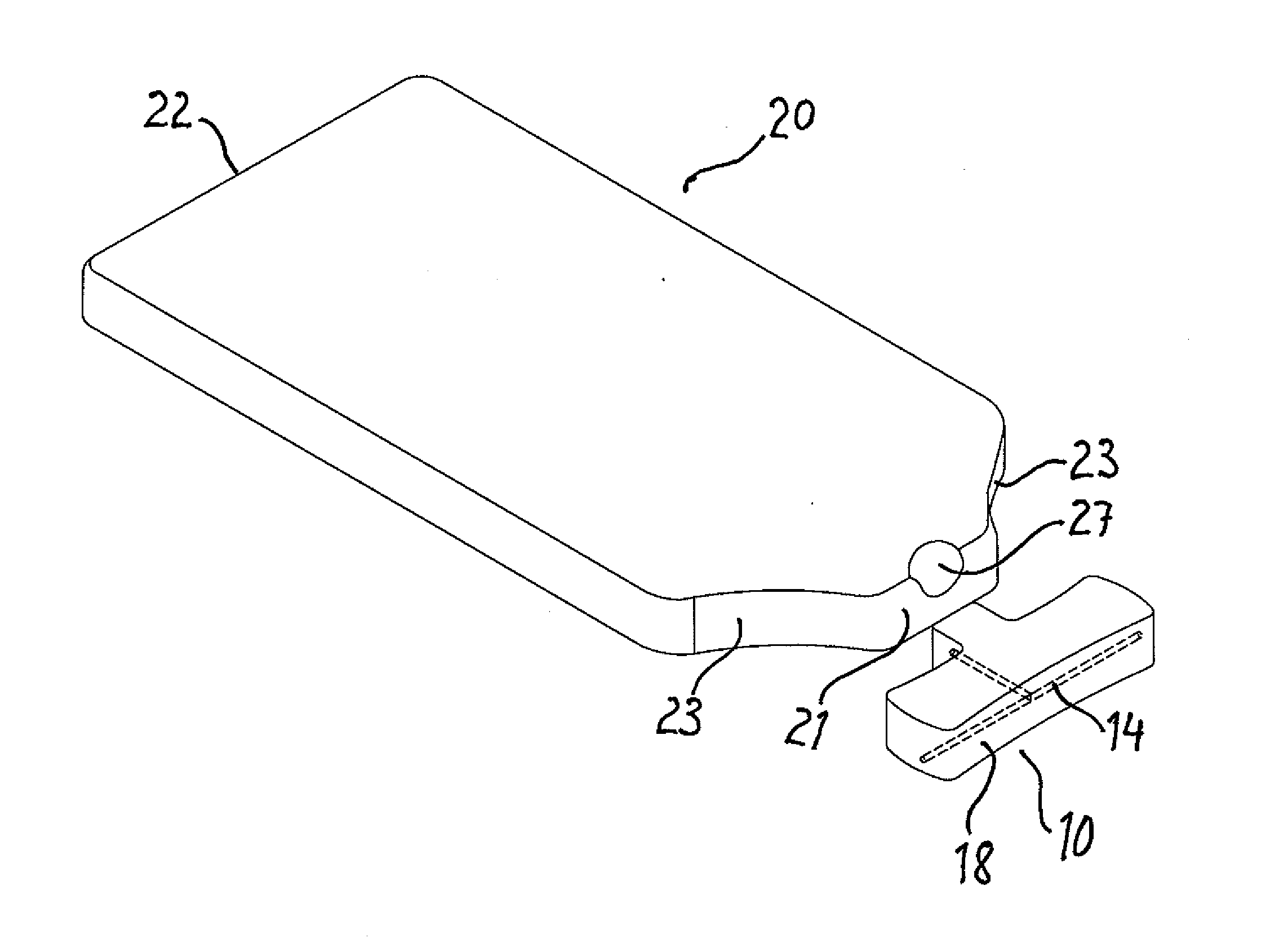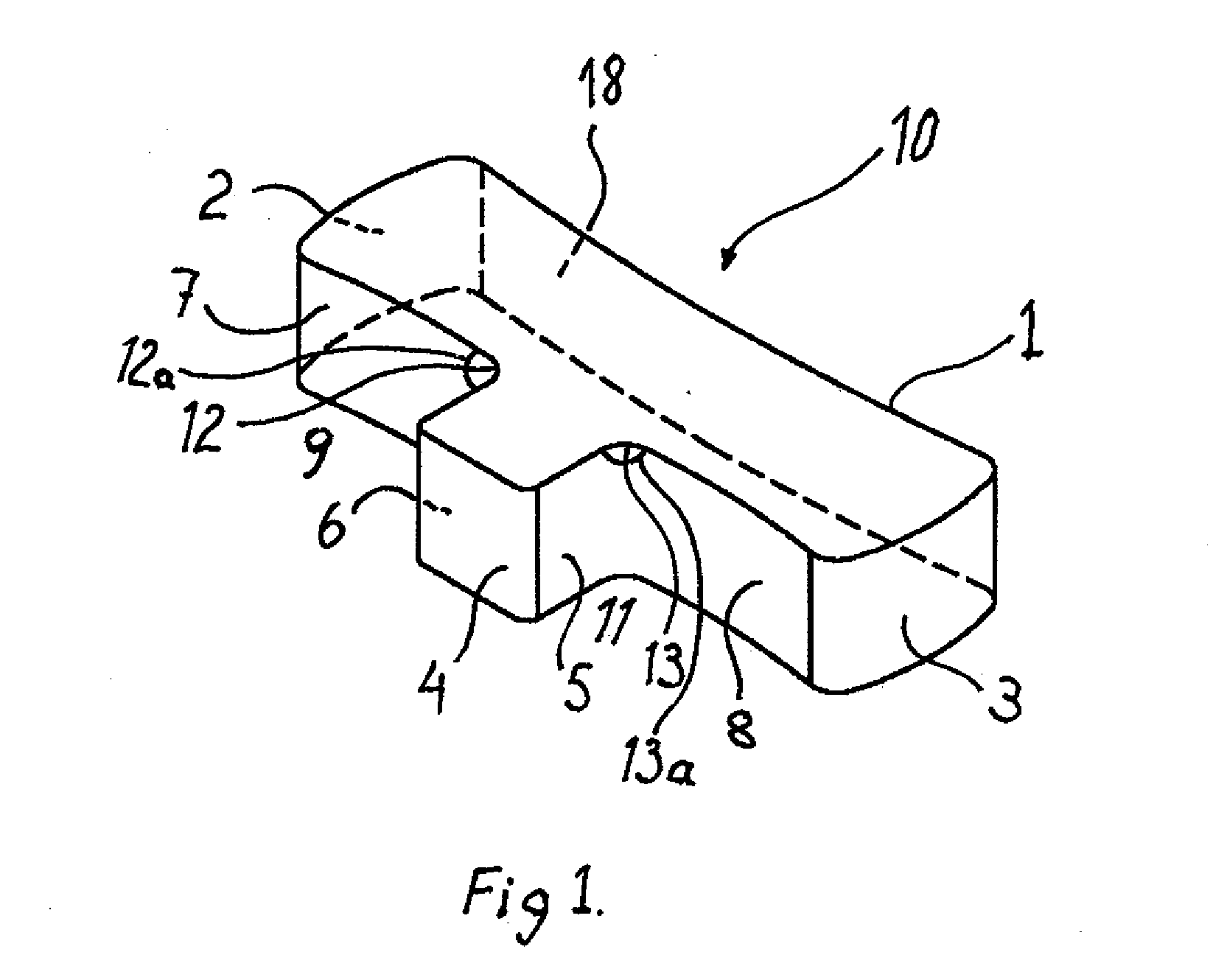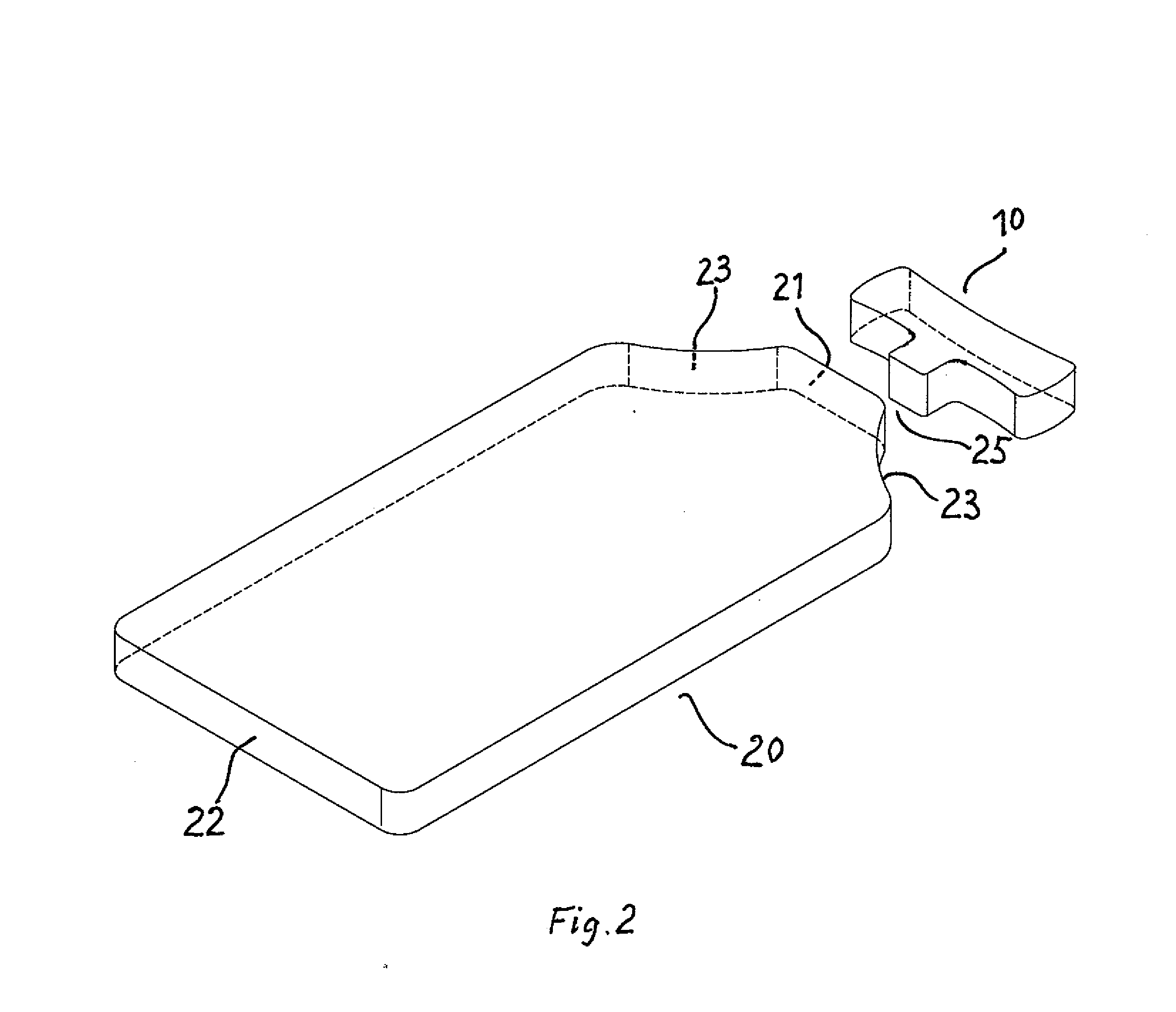Snoring could be a health problem for the snorer.
It may cause sleep fragmentation leading to sleepiness during the day.
Snoring is also often a social problem by negatively affecting the sleeping conditions for a partner who shares
bedroom with the snorer.
Similarly to snoring,
obstructive sleep apnea often causes
daytime sleepiness, and is also recognized as one of the major causes of traffic accidents.
The main problem of CPAP beside the costly equipment and that it is cosmetically unappreciated, is the limited freedom of the user in
bed being forced to wear a
mask covering
nose and / or mouth, and connected via a tube to an electrical apparatus during the sleep.
Many people find wearing a
mask during sleep unpleasant due to pressure.
A cosmetic
side effect is also often a remaining swelling under the eyes and pressure marks on the face.
Furthermore access to electric mains is necessary which may be a problem in developing countries, but also when travelling, camping and in similar situations.
However the main problem with this treatment is compliance.
In conducted medical trials MAD has shown a higher compliance than CPAP, however demonstrating a lower efficiency in treatment of
sleep apnea.
These
surgical procedures have substantial side effects for the patients and they are not considered as common alternative treatments for the sleep
apnea patients.
Although the
diagnostic methods and our knowledge about obstructive sleep
apnea have improved considerably during the past years, the treatment of obstructive sleep apnea is still a great challenge for the physician and of considerable problem for the patient.
However having the head in a true prone position is not possible or is at least very uncomfortable when
lying with the body in a side or semi-prone position on a conventional mattress and having a conventional pillow known in the prior art.
It is also difficult to have the head in a true prone position when having the body in a prone position supported by conventional mattress and pillow.
However, many people find sleeping with the body in a prone position uncomfortable, and they are not able to sleep for the whole night in this position.
There is often a problem of finding a comfortable position of the head and arms, and to move them from one position to another.
Moreover, as a result of sleeping with the body in a prone position, the pillow often tends to block the free passage of air to the mouth and
nose.
The associated experience of heat in the face area and the difficulty in
breathing or the sense of resistance of the air flow when
breathing is unpleasant and often lead to reduced
sleep quality.
However none of these previous systems of cushions and pillows have been shown to satisfactorily provide support for the head and the body to sleep in the prone position in order to reduce obstructive sleep apnea.
As a consequence no medical trials have previously been published to show the efficiency of prone head and
body position in the reduction of sleep apnea.
The degree of flexibility in the choice of the head and arm positions is limited.
Furthermore, the head support and the
rib cage support are not freely adjustable in relation to each other making it difficult to adjust to individual anatomical features.
This device allows sleeping not only in a prone position of the body, but also in a
side lying position of the body, and it does not prevent the user from moving from a prone position to side or semi-prone position, which is not optimal for reducing snoring and sleep apnea.
Furthermore, not providing any substantial support for the body makes it instable to sleep on, and does not allow free exchange of breathing air via the ventilation means having a limited cross-section area determined by the inner walls of the ventilation channel.
This application has mostly been used as a support for prone
body position lying on the beach for a short period of time and would not be functional on a
bed for several hours of usage per night due to the
instability and lack of
aeration.
Some of the positions suggested in the drawings seem strangulating with the risk of asphyxiation of the user at night making this invention hazardous in treating patients.
Similar to WO 2009 / 103109, the degree of flexibility in the choice the of head and arm positions is limited, and the head support and the
rib cage support are not freely adjustable in relation to each other.
Furthermore, the device of U.S. Pat. No. 4,987,625 does not support a sleeping position having a facedown vertically prone position of the head.
This device is mostly designed for prone body working position and is not appropriated in the treatment of sleep disorders.
The breathing spaces do not allow free exchange of breathing air due to a restricted cross-section area determined by the sidewalls of the limbs This device does not permit a full prone sleeping position but a side or a semi-prone position during sleep.
Specifically it is possible to easily change
head position from semi-prone to side during sleep, which is not optimal for reducing snoring and obstructive sleep apnea.
It is not possible to have a sleeping position with the head in a prone facedown vertical position.
Furthermore, the device does not provide any support for the body and comfortable positioning of the arms, making it troublesome to find a natural anatomical position for the shoulders and the arms.
Insufficient
aeration, the impossibility to sleep with a prone
head position and the lack of proper body support, gives substantial reduction in efficiency and compliance in treating sleep apnea and snoring for this pillow.
In addition lacking a proper body and head support makes the pillow rather uncomfortable to lie on with the risk of numbing and pain in addition to the risk for the user to deviate from the intended position.
The pillow according to this patent lacks a proper body support and does not permit a full prone
head position, and the recesses are not flexibly adjustable in size.
The pillow has a great deal of limitation for actual treatment of obstructive sleep apnea due to its shape and the fact of not permitting the full prone position for the head.
The lack of proper body support makes it uncomfortable to use for a longer time and will cause discomfort in the neck, back and the arms.
Lacking a body support however, make the pillows uncomfortable and unsteady for the prone head position.
The pillows have no support for the
forehead, neither for the
chin, making them unstable in the inclination of the head and exerting pressure concentrated only to the cheeks making it uncomfortable for usage during a longer period of time.
This design might produce pain in the neck and the
sensation of sleeping in a tunnel,
claustrophobia and asphyxiation due to lack of sufficient
aeration beside the problems with the positioning of the arms.
Nevertheless none of these including the presented prior art has been able to show efficiency in the treatment of the
disease in conducted medical trials.
There are no objective measures supporting the actual function of these pillows due to practical, functional and anatomical imperfections in the design leading to failure in treatment of the patients with obstructive sleep apnea.
 Login to View More
Login to View More  Login to View More
Login to View More 


